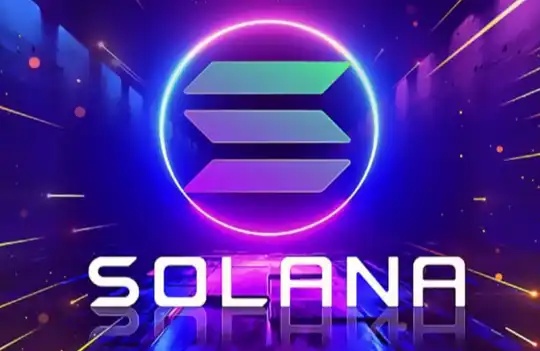Quality will be the biggest winner of the airdrop: AttestationStation
Writing: at
One of the most common criticisms of Web2 is that users have no ownership of the network or platform they contribute to. Web3 provides an alternative, community-based ownership model, and tokens are a key part of this new paradigm.
"Allocating tokens as rewards to the most active users in the community/platform" has become a widespread consensus in the crypto industry. Many platforms have adopted this way to allocate tokens by distributing the initial Token/ reward to users who use the platform within a certain period of time in the form of airdrops. In doing so, we hope to align our long-term interests with the contributors and active users in our community.
However, in a decentralized context, which wallet accounts are active users is a difficult thing to define, but it is certain that there are a large number of airdrop hunter wallets that have no record of interaction other than participating in airdrop related operations, which is what we call witch attack.
Witch attacks and drop hunters
A Sybil Attack is the act of creating a number of different fake identities in an online system to manipulate, giving a small number of participants in the network a quota of influence that they do not deserve. POS and proof-of-work mechanisms on blockchain provide a witch-resistant solution, allowing these mechanisms to prevent a single user from starting a large number of nodes to affect the network due to the economic cost involved.
In the current phase, airdrop hunters are a new form of witch attack. These accounts purposefully interact with smart contracts and protocols in order to capture large amounts of airdrop Token shares.
Creating a new identity in Web3 is as simple as generating a private key and requires a small gas fee to send funds to multiple different wallets, making the cost of the drop hunter almost zero. As the transaction costs go down, witch attacks will get worse.
The existence of a large number of airdrop hunters has forced many decentralized apps to confront the problem that the simple design of the airdrop mechanism may not work. If a large number of tokens are allocated to airdrop hunting robots without filtering, many users cash out immediately after receiving the reward, sending Token prices plummeting in the short term.
In cases where it is not possible to measure a project's real needs in terms of a single wallet address, it is important for the project side to rule out at least one address as likely to be a bot, so that these addresses can be whitelisted.
One of the easiest ways to prove that an account is not a bot is to go through Identity validation with a third party, such as a phone number, credit card, driver's license, bank account or ID card to prove your identity. However, This centralization of KYC is clearly against the spirit of Web3.
This requires proving your true identity without sacrificing privacy and decentralization in a new decentralized way of KYC, the proof of "you are you," which is what AttestationStation is trying to achieve.
What is AttestationStation?
AttestationStation is a consentless reputation smart contract deployed on Optimism, which allows the user to generate an attestation of any on-chain address, known in this system as an attestation, Multiple attestations form a social graph of addresses on the chain.
So, what is an attestation?
An Attestation is a random comment about anything. For example, "His name is Robert Paulson" is a common type of Attestation used in everyday life to prove someone's identity. When we log into our email account, we have to enter a password to Attestation and prove our digital identity.
In blockchain, the equivalent form of proof is a private key, which, for example, proves that you are the owner of the asset in the wallet when you sign a transaction. Looking at a user's on-chain transaction history, you can see that this type of action is essentially a proof of a smart contract.
In the new scenario of the crypto industry, all the on-chain records of a wallet form the basis of all the trust of that user, can prove that "you are you", and can show "your" on-chain history in a verifiable way on the blockchain.
In the AttestationStation system, an attestation can be a "trust score" for a specific address, can be provided anyqualitativeOr quantitative statement. For example, a person participates in governance, makes donations, participates in offline meetings, and is proved by the social relationship of friends at the Attestation can be used as a way of statement.

characteristic
AttestationStation is a decentralized, point-to-point, multi-source, modular on-chain relationship graph. With the accumulation of more and more data, samples and iterative algorithms, the user address can be carried outQualitative analysis, extract more accurate user portraits based on different algorithms.
Decentralized identity trust networks that do not compromise privacy
AttestationStation is built on zero-knowledge proof, which allows users to prove the authenticity of a thing without providing a full identity. This means that "you are you" can be proved without disclosing privacy, which is the cornerstone of the crypto industry, and of course it is an inevitable choice.
Point-to-point and multipoint sources (signal)
AttestationStation is not user data and identity owned by a single entity, but a peer-to-peer network composed of nodes that verify each other.

In a centralized system, identity services own the identity attributes of the user
Each Attestation is a proof of the signature of an address on one chain to an address on another chain. Each signature creates a new connection (technically a directed graph) in the network, which constitutes a peer-to-peer social network with anonymous nodes verifying each other. For example, zain.eth attest to the attest that "kathy.eth is a colleague of ta", and kathy.eth Attest to the Attest that "will.eth is his friend"...

Decentralized identity mapping requires the participation of different actors
The traditional verification method is a single point of information source, such as a video call or an email, which is easy to forge. AttestationStation uses multi-point information source interactive verification, which makes a person's digital identity formed by multi-point information source more secure and difficult to forge.
Quantitative and qualitative analysis
Through the above multi-point information source data graph from different dimensions, a person's relationship with the world can be shown, including the activities a person has participated in in the past, friendly relations, work experience, experience, skills and participated in hackathons and other activities. Through quantitative and qualitative analysis of these relationship data, a corresponding trust score value can be generated for each wallet address.
For a particular wallet address, once there is proof of multiple social relationships from different dimensions based on the address (the proof is not only transactions, but also the activities he has participated in, the metacomverse footprint, the collection of NFT, the community he has participated in and the degree of activity in the community, the online governance he has participated in, etc.), then, Developers can then extract more information from the address based on different algorithms, and perform a more granular user profile analysis on the address, rather than the basic "filter an address is not a bot account" we mentioned earlier.
Whether it's screening loyal users for airdrops, getting real market demand data, or even community players looking for a specific vibe attribute, extracting data insights from this data graph can benefit projects with different application needs.
Modular relationship graph
AttestationStation has taken a peer-to-peer approach from the outset to create a decentralized, permission-free open identity data graph. Therefore, all Attestations submitted by users are on-chain proofs and can be invoked by multiple smart contracts in different applications.
For the developer, the p2p verification graph can be retrieved from AttestationStation, the data set can be calculated, the identity set module can be derived, and applied in practice, and the iterative improvement can be made based on the results.
Modular AttestationStation allows its data sets to be arbitrarily combined, extracted, and reused, iterating and recombining based on actual effects. With the continuous evolution of the algorithm, a larger trust network can be derived and a completely peer-to-peer trusted neutral reputation system can be established. It's worth noting that as trust networks accumulate network effects, witch attacks will become more and more difficult, which means that witch resistance will become cheaper and cheaper.
AttestationStation and the Civic House
AttestationStation was born out of Optimism's direct desire to engage a wide range of communities and groups in decentralized governance of public affairs, Qualify outside OP Token holders to participate in governance and dialogue on "what is good for Optimism in public affairs".
Optimism suggests that if public governance right is equated with Token ownership in a simple and crude way, the final result will be that those who hold the most tokens become the ones who occupy the absolute right of discourse and governance. Their decisions cannot represent the will of the masses, and ultimately result in plutocratic politics.
To dampen this plutocratic politics, Optimism was founded by the Collective, a public group that includes "Opholders" and "OP Citizens' House". For "OP Holders", proxy voting mode of "one currency, one vote" or delegate voting rights to others is mainly used. Token voting represents the preference of capital, while the other "citizens' homes" are mainly responsible for voting on RetroPGF, holding the voting principle of "one person, one vote".
Notably, RetroPGF, a retroactive public goods financing initiative launched by Optimism, will serve as a testing ground for optimism's philosophy of impact = profit. The idea is that individuals who positively influence a collective organization should be rewarded with profits so that the group as a whole benefits, creating an economically recyclable and diverse ecosystem.

In accordance with the Optimism of Ecology, RetroPGF will conduct future rounds of retroactive financing allocation to allocate funds from RetroPGF to those who engage in building public goods in the optimism of ecology. Optimism allocated 20% of OP's initial supply to RetroPGF, with other sources of income including a portion of profits generated by the re-deployment Optimism agreement, as well as donations from other project parties.
"How and how much of this money will be allocated will be the most important thing," it will be decided by a vote of the members of Citizens' House, the Citizens' House, through which the first round of RetroPGF has allocated $1 million in funding to 58 open-source software projectsThe second round of RetroPGFCurrently underway, RetroPGF 2 will allocate 10 million OP tokens to fund public goods that support OP Stack development and related use cases.
Another important element of Optimism Collective, the Opholders, had the right to veto changes to the founding document of the Optimism Foundation. Optimism suggests that such a structured system of governance, The goal of balancing short-term incentives with long-term vision can be achieved.
However, this "one person, one vote" mechanism is also easy to fake in the blockchain, after all, there is no cost to create a new wallet as an identity, which requires a decentralized identity system.
This is why AttestationStation is deployed on Optimism, which assigns a trust score to an address on a particular chain and measures the true social relationships (influence) of that address by allowing anyone to make arbitrary testimonies of other addresses.
The goal of AttestationStation is to build a robust reputation system that will be key to connecting chaebol politics and maximizing response to the public good of humanity. Just as token-based governance systems (one coin, one vote) reflect the preferences of token holders, reputation-based governance systems represent the voice of individual citizens (one person, one vote).
What problem to solve?
In the short term, AttestationStation can be used as an identity primitive to solve the biggest problem in the crypto industry right now -- massive witch attacks. By screening out bot addresses, AttestationStation's most immediate role is to help project parties identify real users. A simple use case is to cull witch accounts using the open, permissionless Anti-witch attack API. Further, more effective indicators can be obtained to measure the real user demand, the conversion rate of air delivery, etc.
The problem of fake identities is not limited to the crypto industry. The Internet is also full of fake accounts, which affect billions of people. Such accounts not only spread false news, but also influence the direction of political opinion, such as the presidential election in which bots were used to interfere with the direction of public opinion.
In the long run, when the data sources in AttestationStation accumulate enough, a layer of identity data can be formed to measure on-chain users, and a variety of anti-witch attack applications can be built, such as on-chain credit score/under collateralized loan application.
Of course, a reputation system with sufficient diversity and data should not only be about transactions, but also involve the broader chain information of a person, including the activities he has participated in, the places he has been to, the community activities he has participated in, the NFT he has held, the degree of governance participation and activity, etc. This data can be used for qualitative analysis to gain deep, multidimensional insights into the user's interest /vibe graph, etc.
Hackathons and data
Of course, whether any of these applications will work depends on whether there is enough validation data in the data graph library, how it is used and implemented by developers, and what results it produces in real-world cases.
Therefore, it is critical to bring in enough developers, or project parties, to the agreement, which has been created so far:
Clique is already based on this protocolA privacy-protecting authentication application based on zero-knowledge proof is developed, which allows users to use zk to prove their group identity in OP's Discord without having to reveal their Discord ID.
FlipsidecryptoInitiates an on-chain score based on AttestationStationIn addition, AttestationStation will be andGitcoin Passport, Guild, nxyz, Otterspace, Trust Protocol, and WonderverseAnd other teams working together to build on this reputation ecosystem.
Optimism is the official book of OptimismCustom image NFT projectAlso based on AttestationStation development.
At ETHDenver 2023 Hackathon,Build apps based on AttestationStationThat Optimism, which was the only theme of Hackathon, indicates how optimism optimism people put on the Attestation developer community.

On the other hand, in order to attest to the identity graph of a rich data source, the data authentication input from a large number of users is required, how to motivate the ordinary users to join in to attest is a crucial issue. One possible choice is The Optimism of the third round of airdrops will be interactively associated with AttestationStation eco-related applications.
Created from @oplabspbcdashboardSo far, 540,000 certificates have been generated on AttestationStation by 513 users, indicating that a single address is highly active.
According to the leaderboard, by far the most proof data was generated by Clique, accounting for more than 60% of the total -- 69,000 addresses -- and the majority of proof data was generated around Twitter and Discord.
Witch attacks and anti-witch solutions are destined to be a battle of wits and courage. To prevent the misuse of robots,Arbitrum implemented the preliminary witch address investigation", Optimism deleted 17,000 addresses of suspected witch attackers.
As more and more project parties realize that simple air drop mechanism is not good for project growth, the simple and crude air drop distribution mechanism will be gradually phased out, instead, a new generation of air drop incentive strategy showing multiple rounds and quest-oriented. It can be predicted that future air drop will not only be related to quantitative data such as trading volume, but also qualitative data analysis. For example, hierarchical screening of users based on community contributions, or even more accurate profile analysis of target users based on interest /vibe graph, such data analysis is supported by modularity and algorithms for the use of swarm intelligence.
Creating a trust-free identity system in crypto systems, whether applied to DeFi lending or the evolution of the crypto industry towards long-termism and organic growth, is a crucial part of the process. Today we see different solutions, whether soul binding or DID, coming out to solve this problem, but no matter how well designed the mechanism is, The key to success is not the vision, but the ability to attract enough users to contribute data. Optimism, which is characterized by game incentive mechanism and aims to build a sustainable future of Taifang, is the optimism that the other side of the game, "Airdrop hunter", needs to think about whether AttestationStation data contribution will be linked with airdrop mission in the upcoming third round of airdrop, as well as how to set relevant weights.
Reference source:
https://www.youtube.com/watch?v=o0N1Z9AyrEM
https://dev.optimism.io/making-blockchains-human-friendly/
https://community.optimism.io/docs/governance/citizens-house/#how-retropgf-works
https://community.optimism.io/docs/governance/attestation-station/#
https://twitter.com/binji_x/status/1630597351231606785
Welcome to join the official BlockBeats community:
Telegram Subscription Group: https://t.me/theblockbeats
Telegram Discussion Group: https://t.me/BlockBeats_App
Official Twitter Account: https://twitter.com/BlockBeatsAsia


 Forum
Forum Finance
Finance
 Specials
Specials
 On-chain Eco
On-chain Eco
 Entry
Entry
 Podcasts
Podcasts
 Activities
Activities
 OPRR
OPRR









